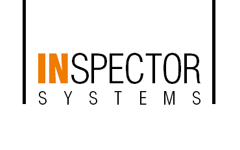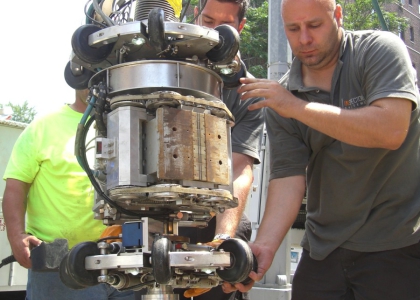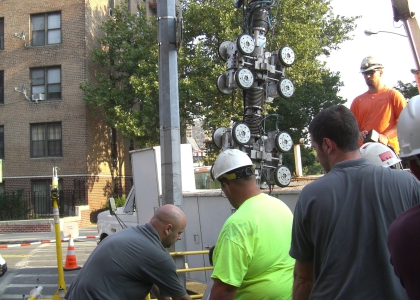The New York City Department of Environmental Protection (NYCDEP) administers the city’s water supply. One of its tasks is to distribute more than 1.1 billion US gallons (4,200,000 m3) of water per day to nine million inhabitants in the entire state of New York.
For this mammoth daily task a complex network of 19 reservoirs, three controlled lakes and 6200 miles (10,000 kg) of water pipelines, tunnels and aqueducts are used. The DEP is also responsible for administering the municipal mixed water sewerage system through which both rainwater and waste water flow, as well as for 14 sewage treatment plants in the entire city area of New York.
Gigantic dimensions in a gigantic city. On behalf of the Department of Environmental Protection (DEP) in collaboration with the City College of New York the project leaders of these two companies first approached INSPECTOR SYSTEMS in 2006.
The task at hand was clearly defined: it was a question of selecting an inspection robot that can inspect the main water pipelines, known as force mains, in New York City and check for any possible negative changes in the wall thickness. The force main pipelines are underground pressurised pipelines.
In the entire city area of New York they pump waste water from an underground waste water reservoir to a higher level so that the waste water than make its way via further drains to the treatment plant. The force main pipelines are predominantly made of cast iron and are over 100 years old in places.
The old pipelines were increasingly exhibiting leaks from which waste water escaped into the ground or on the streets above the pipelines.
On renewing these pipelines it was found that some of the removed partial sections of the force main in the lower area of the pipeline had been damaged by washing out and corrosion. Thereupon, as part of a pilot project the DEP decided to examine various pipelines. For this, within the context of a worldwide technology study an INSPECTOR SYSTEMS inspection robot was selected which in conjunction with a SLOFEC eddy current testing unit by Kontrolltechnik is able to check the cast iron pipes for areas of corrosion.
The SLOFEC ™ inspection technology uses the eddy current technique in combination with a magnetic field. Through superimposed DC magnetisation the penetration depth increased in such a way that corrosion (metal loss) can be detected both on the inside and on the exterior. This is a test method for detecting corrosion on the inside and outside of thick-walled pipes and also provides reliable test results in the case of cast iron materials.
The checked pipeline involves a force main with a length or around 150 metres and a diameter of 24 inches. The force main was laid underground beneath a four-lane road in the suburb of Queens. In addition to the checking of cast iron material, the main difficulty in the case of this inspection was that the entire inspection robot had to be introduced into the force main chamber through a narrow drain opening in the street. From there it had to reach the section to be tested via a narrow radius. These conditions could only be overcome through the flexible design of the inspection robot with its various drive elements and bellows.




